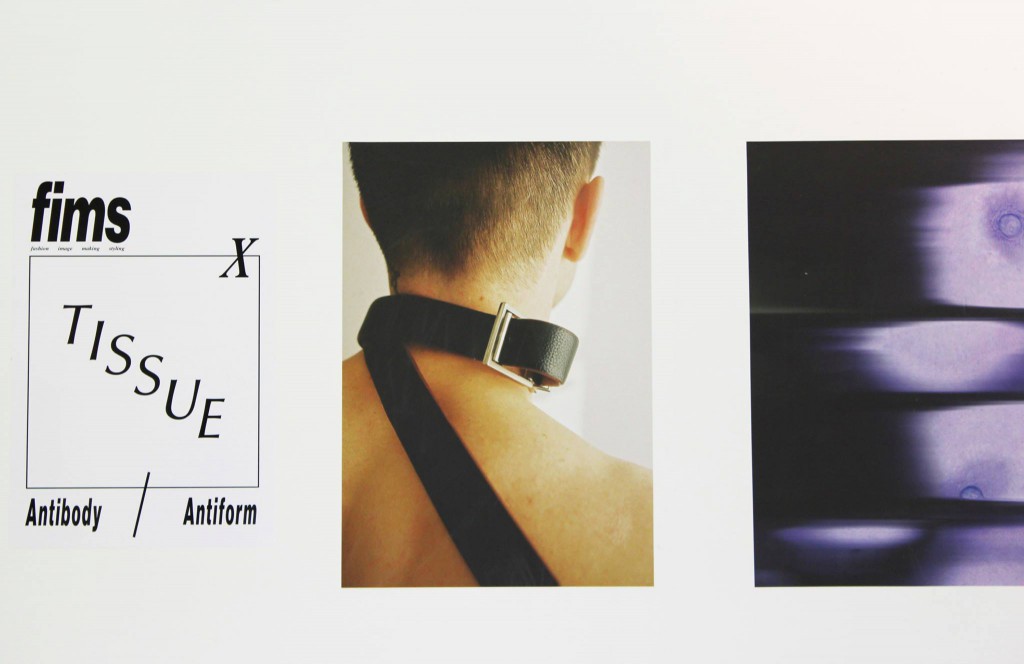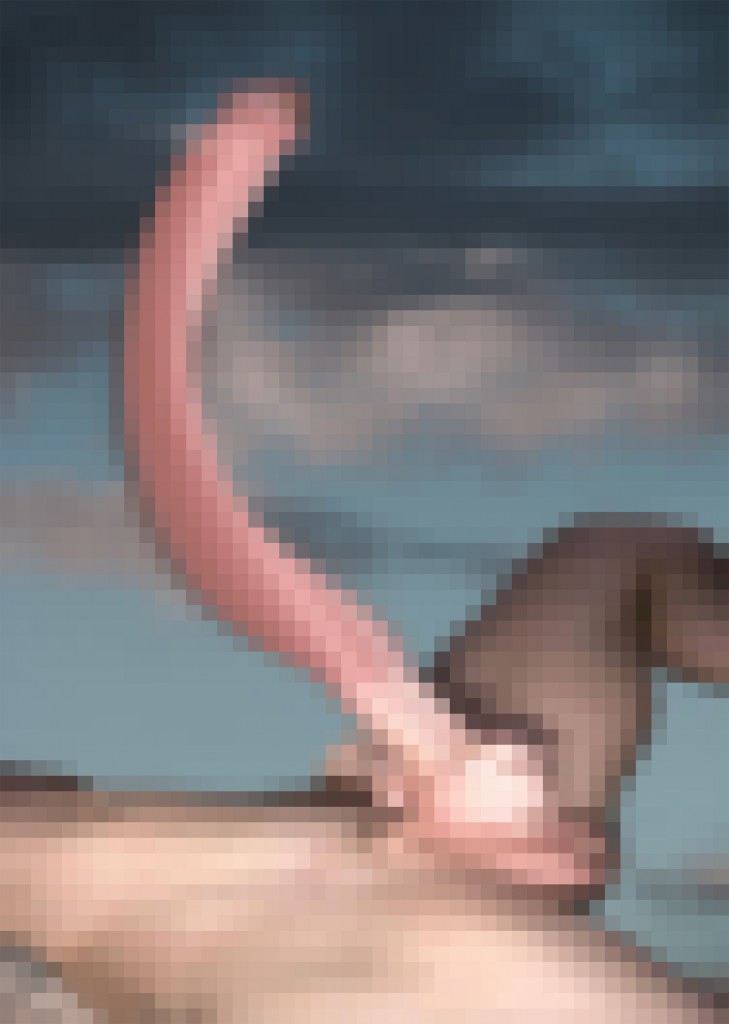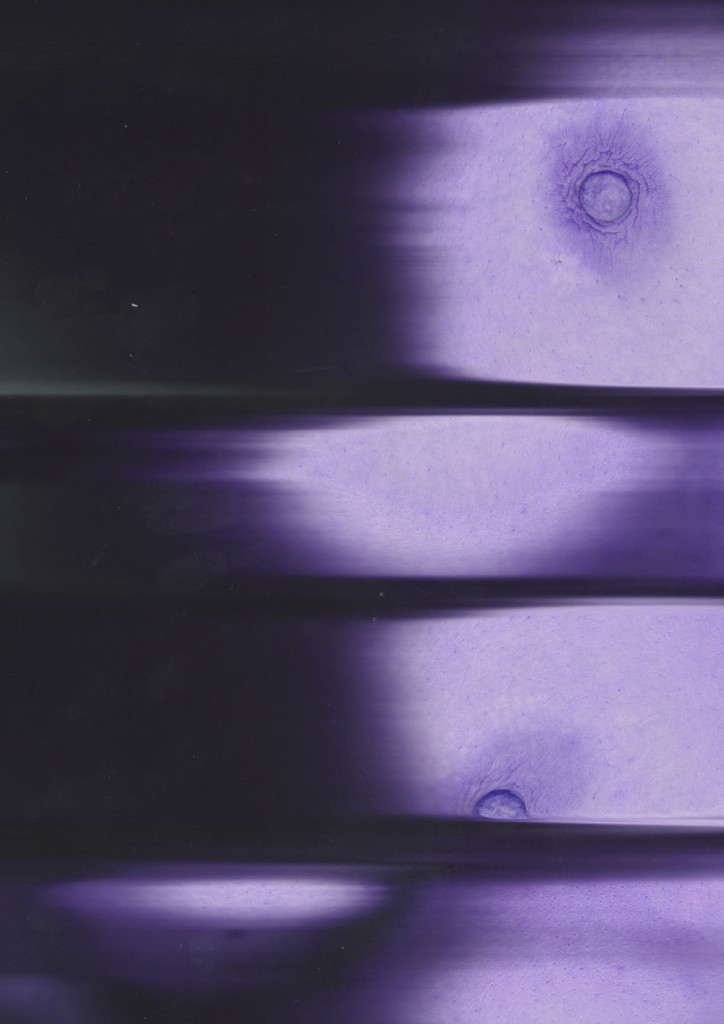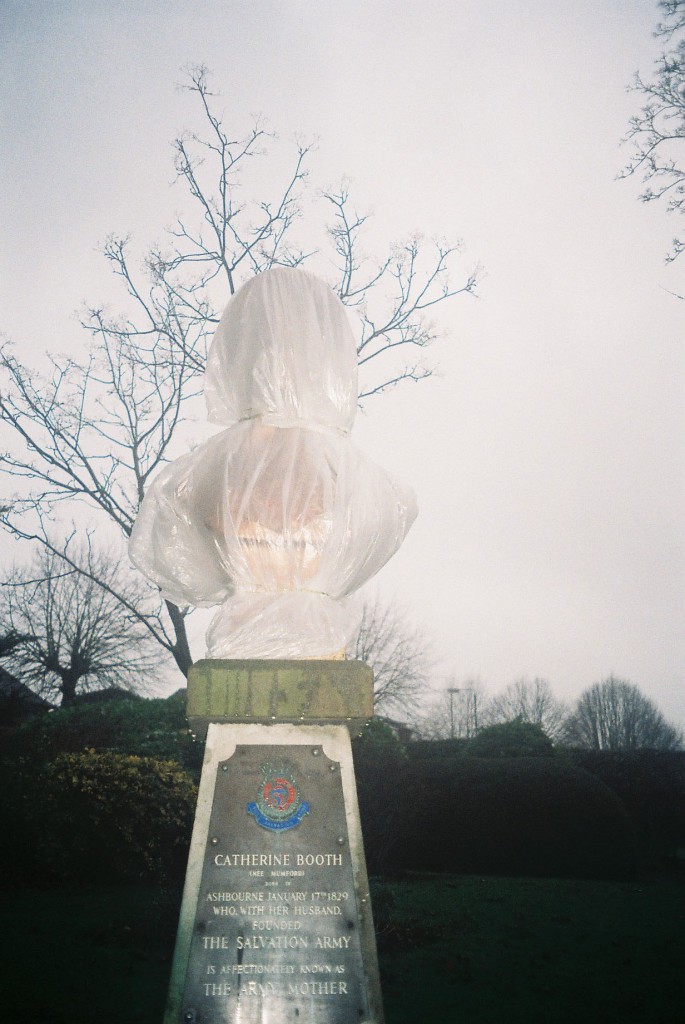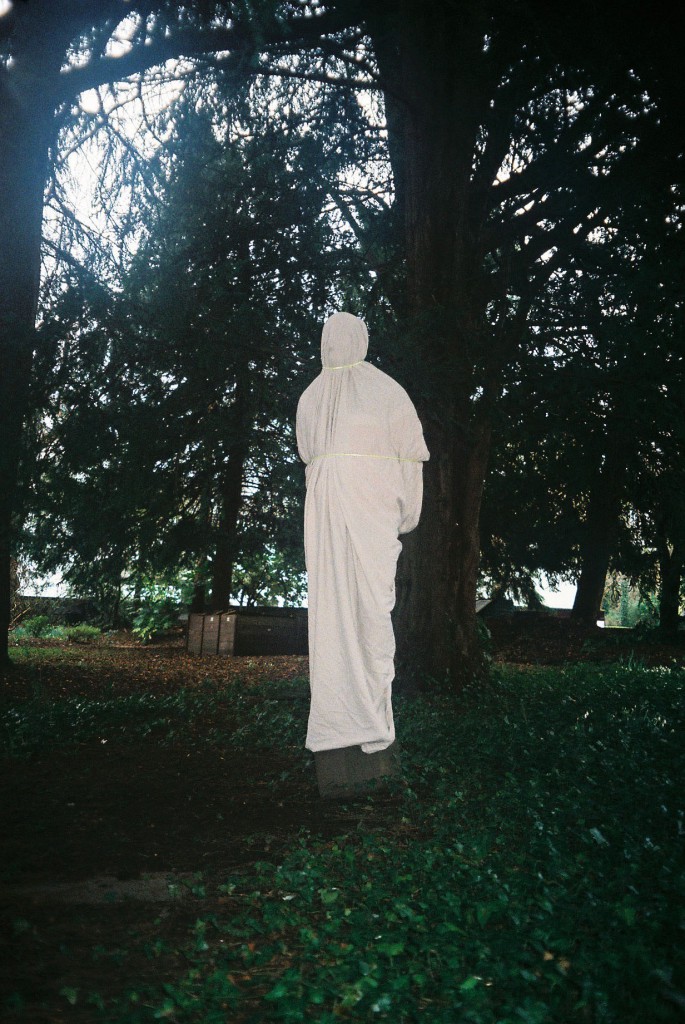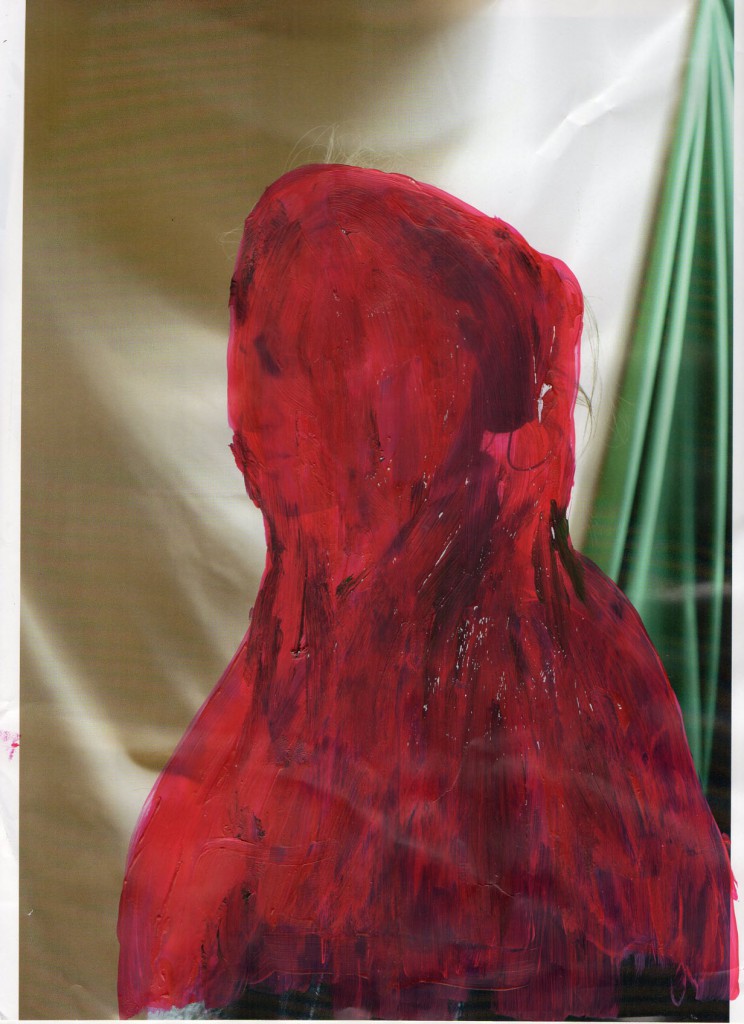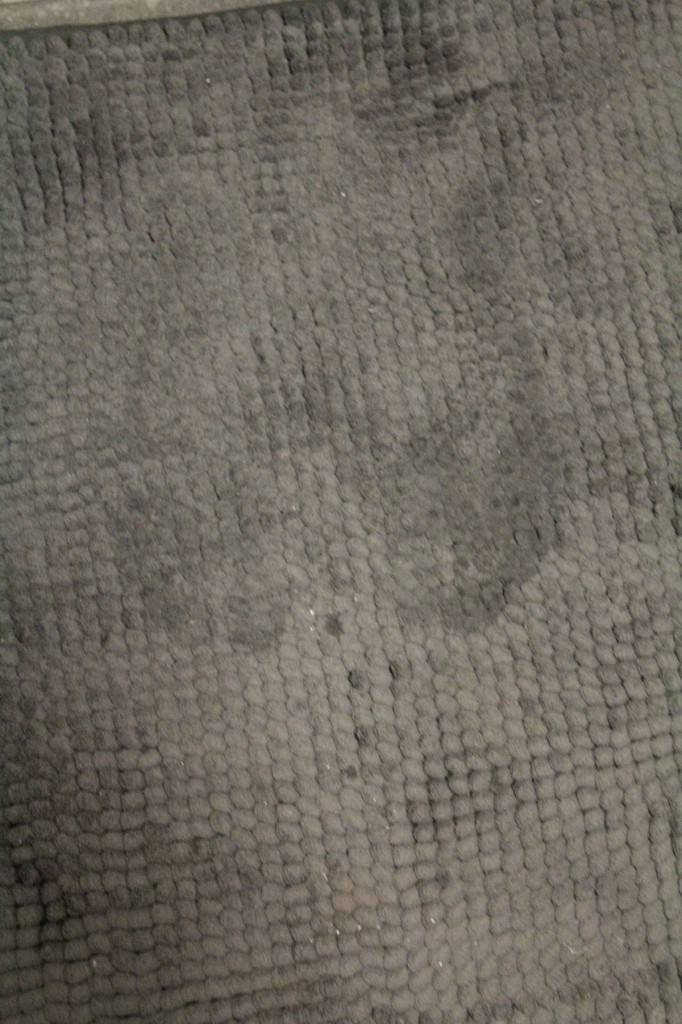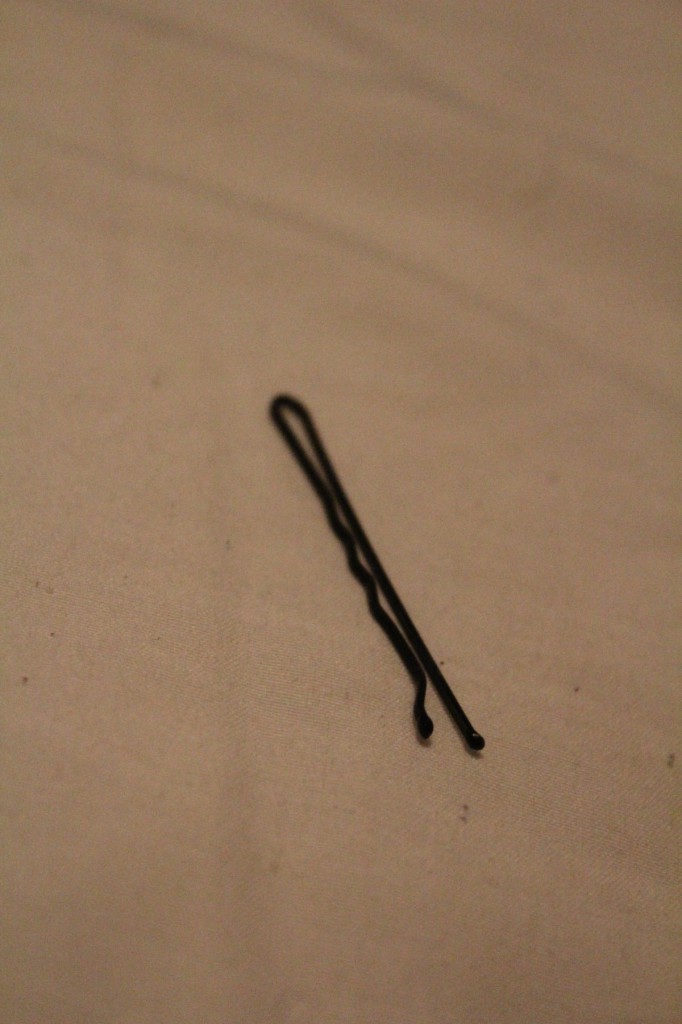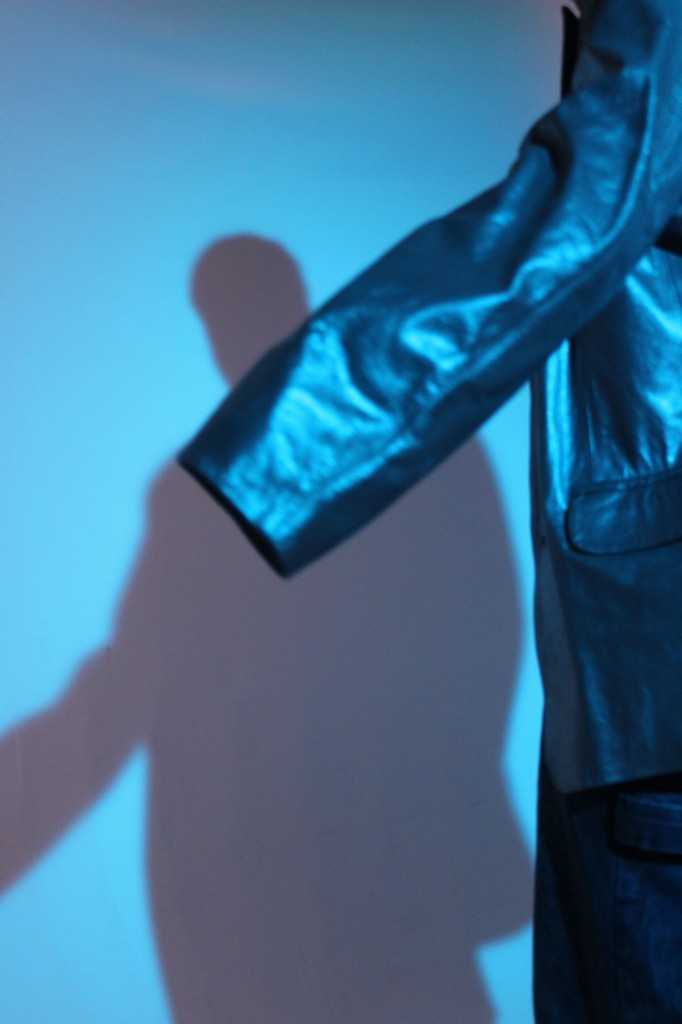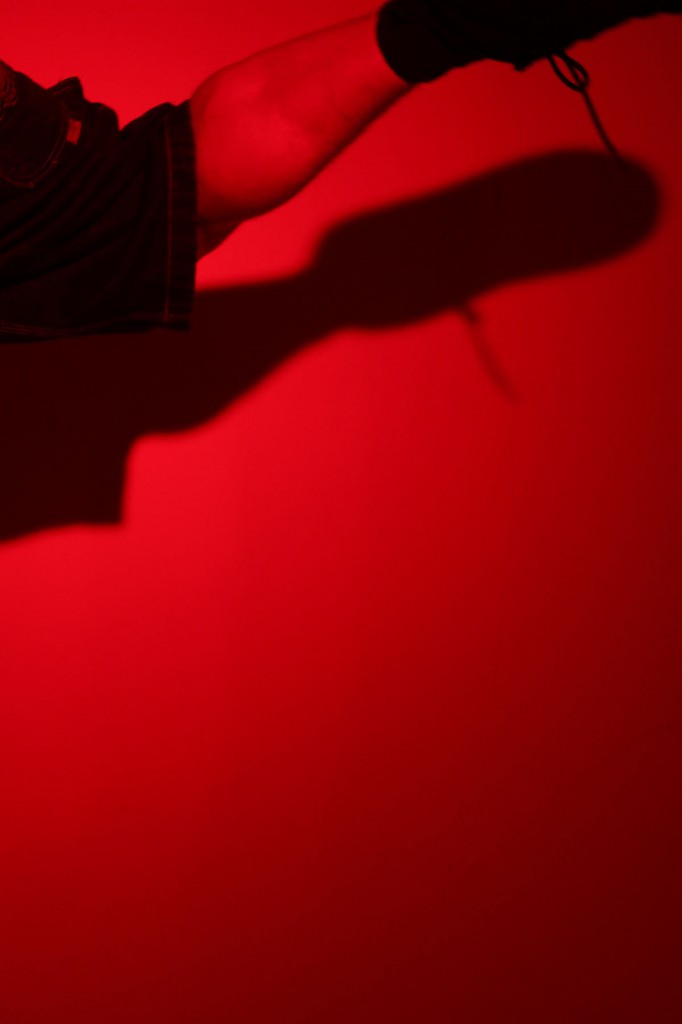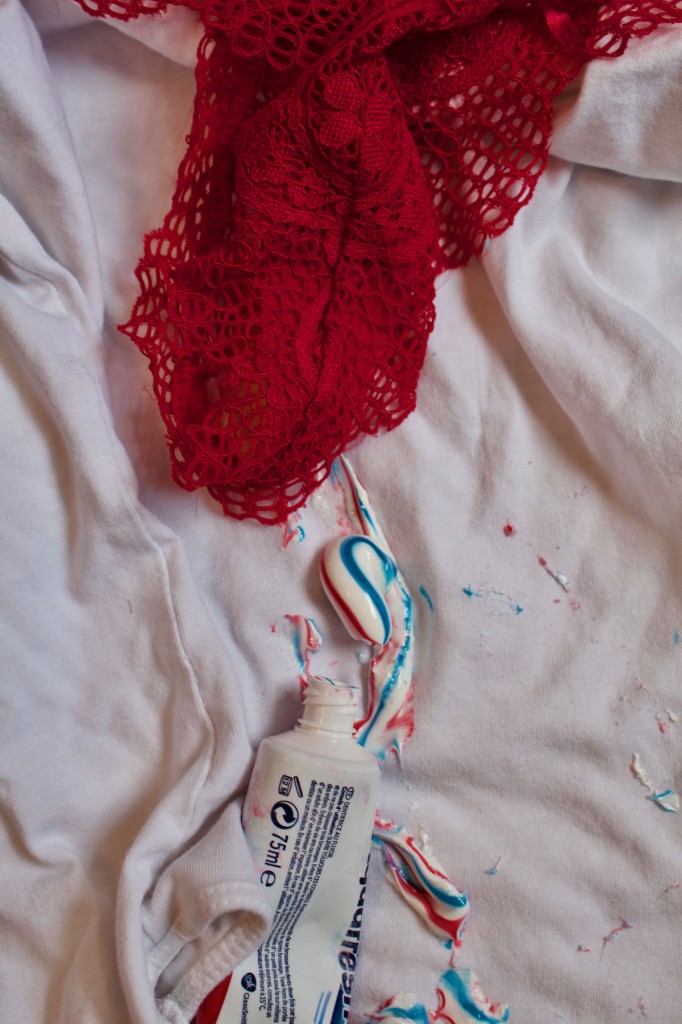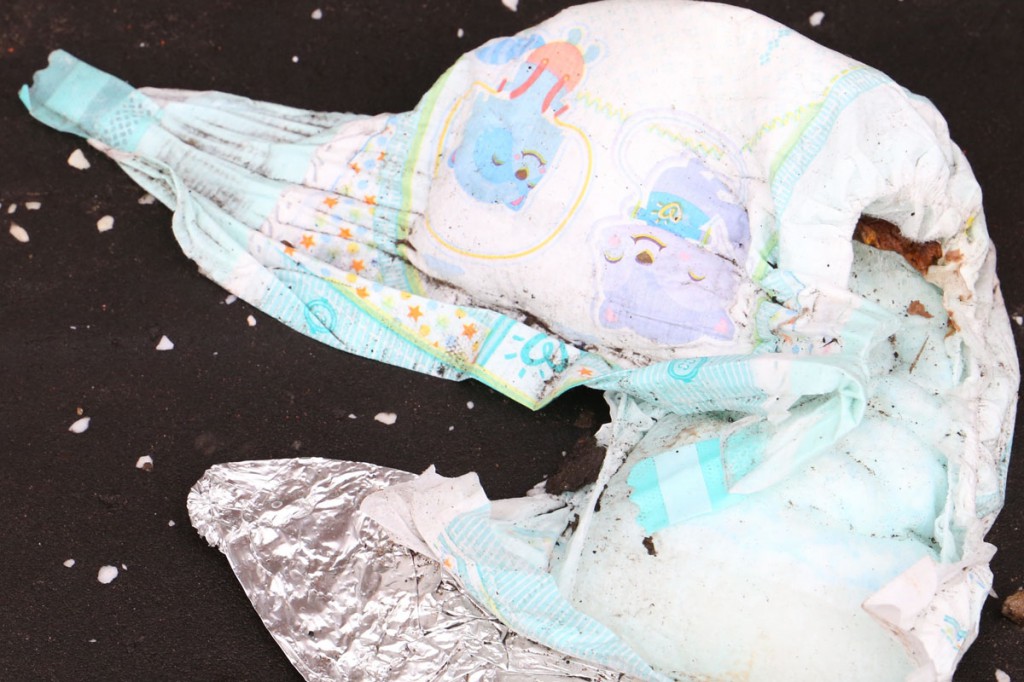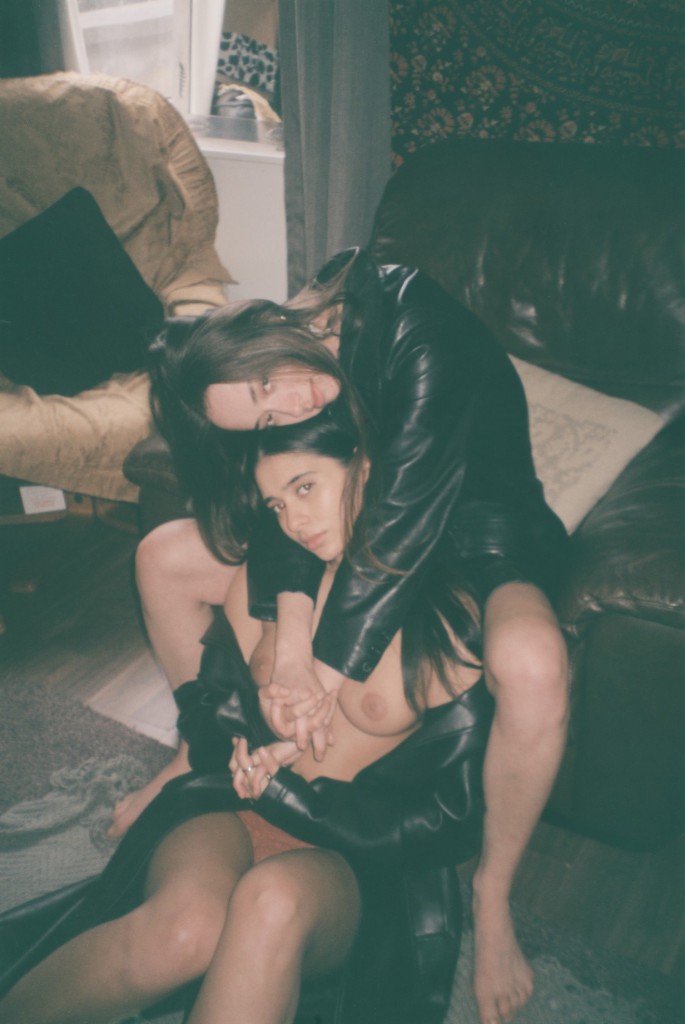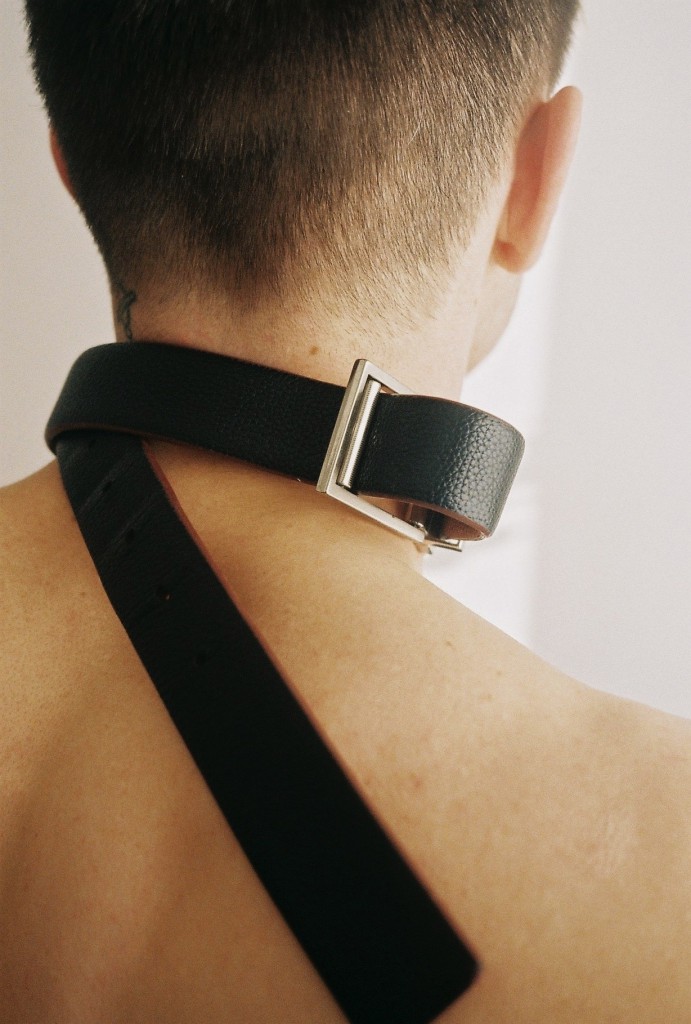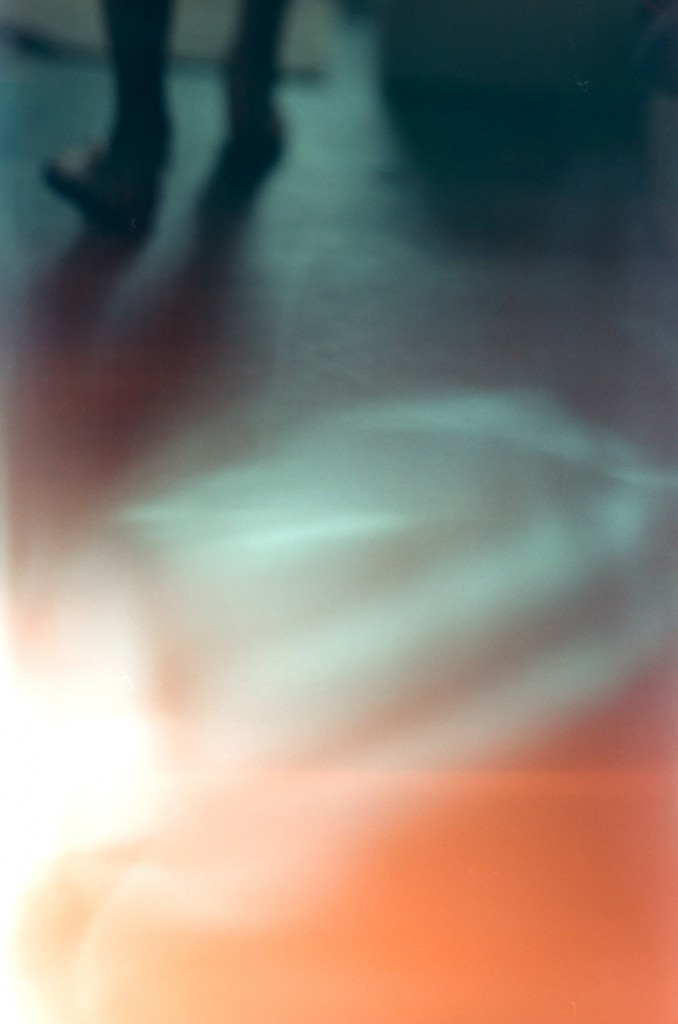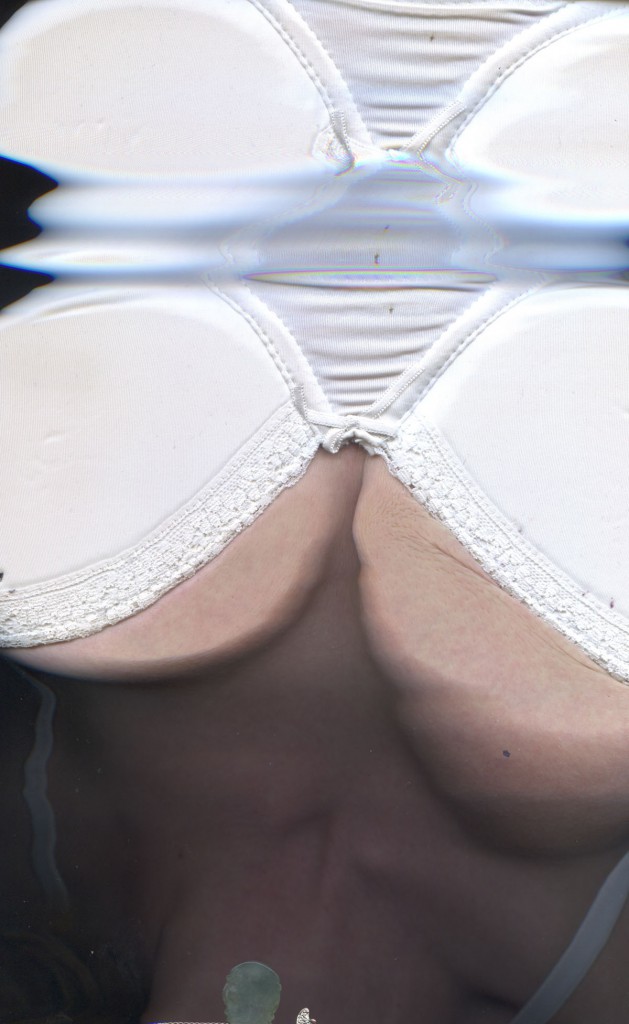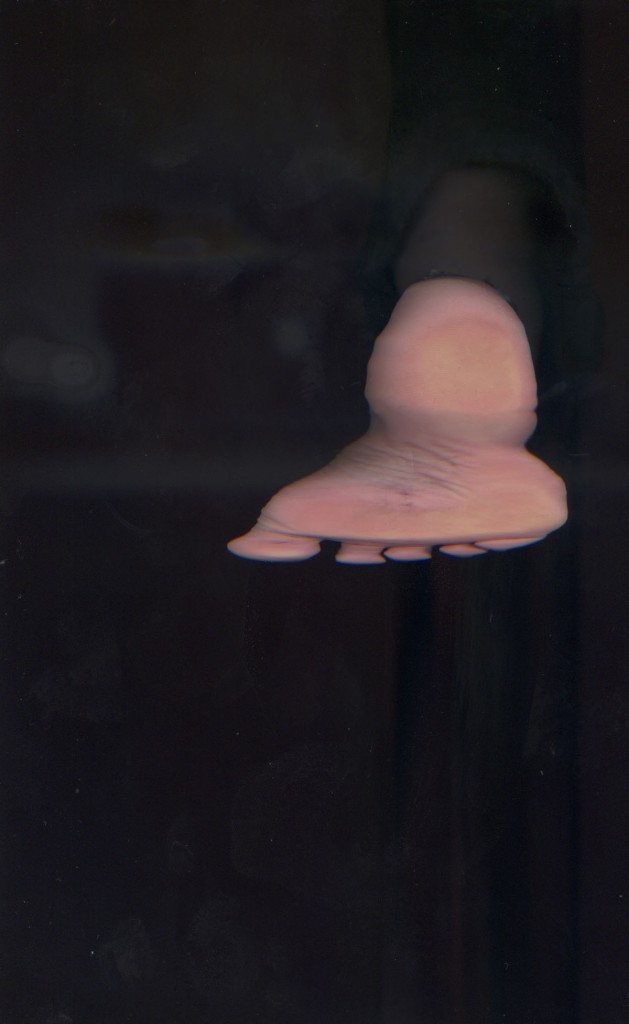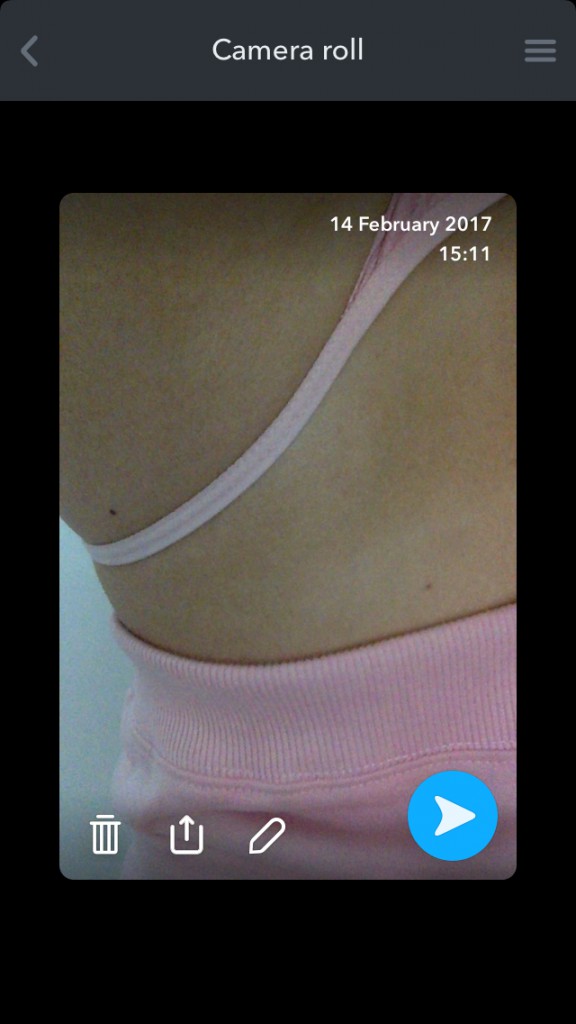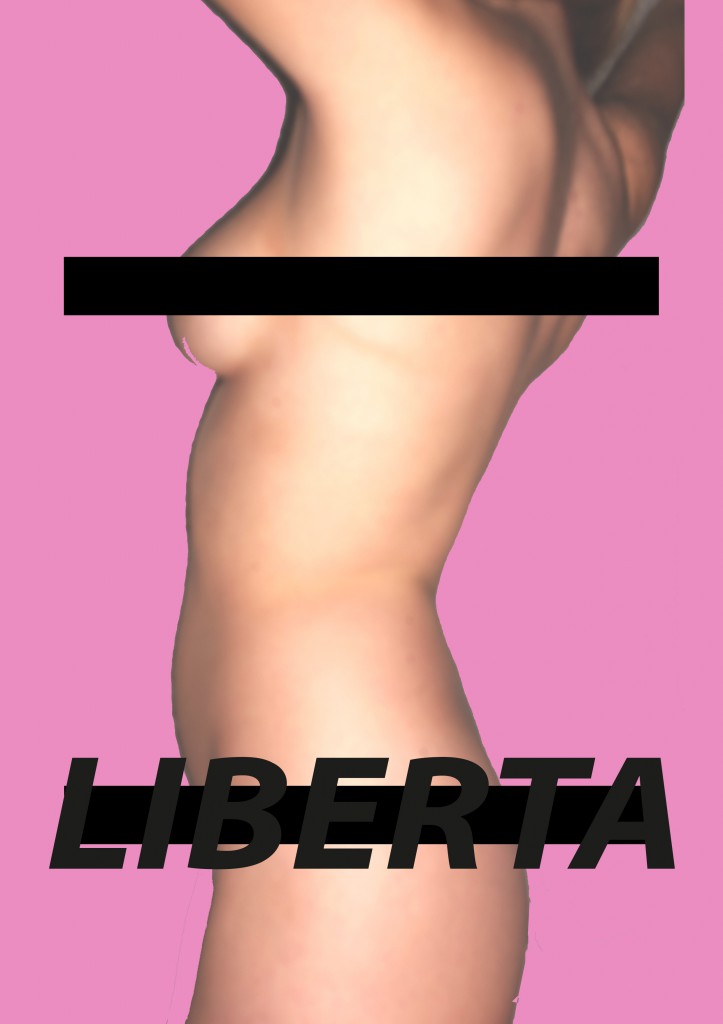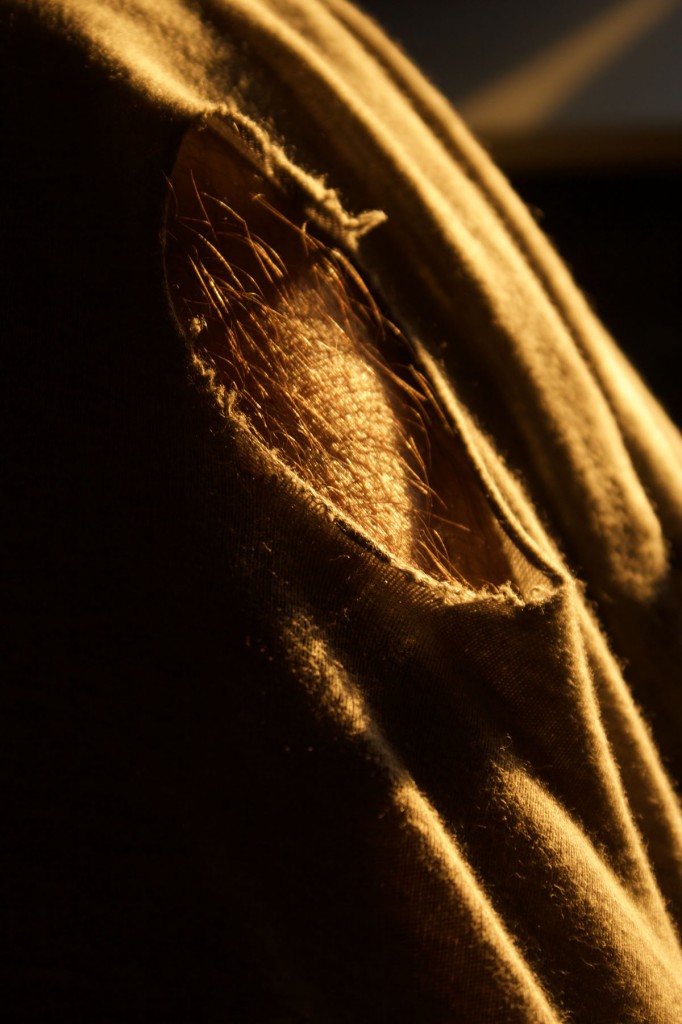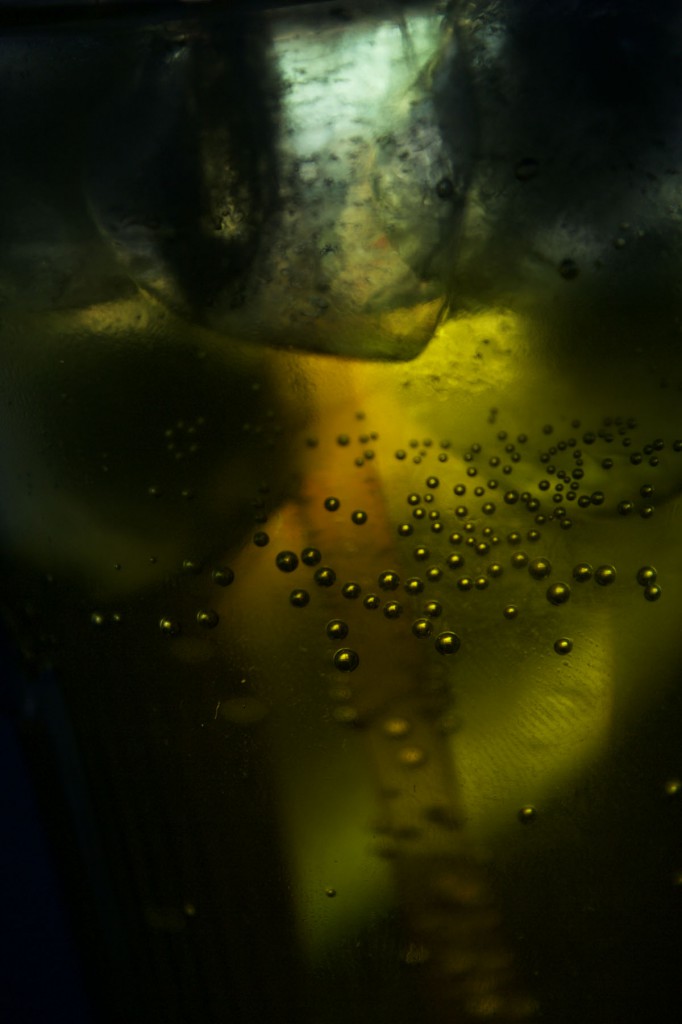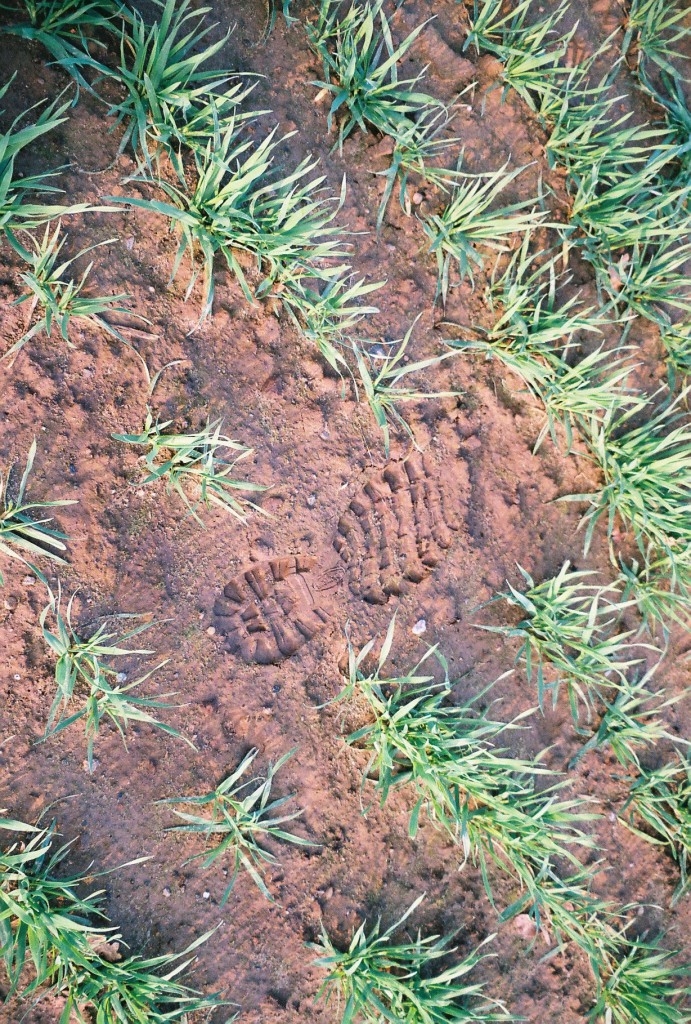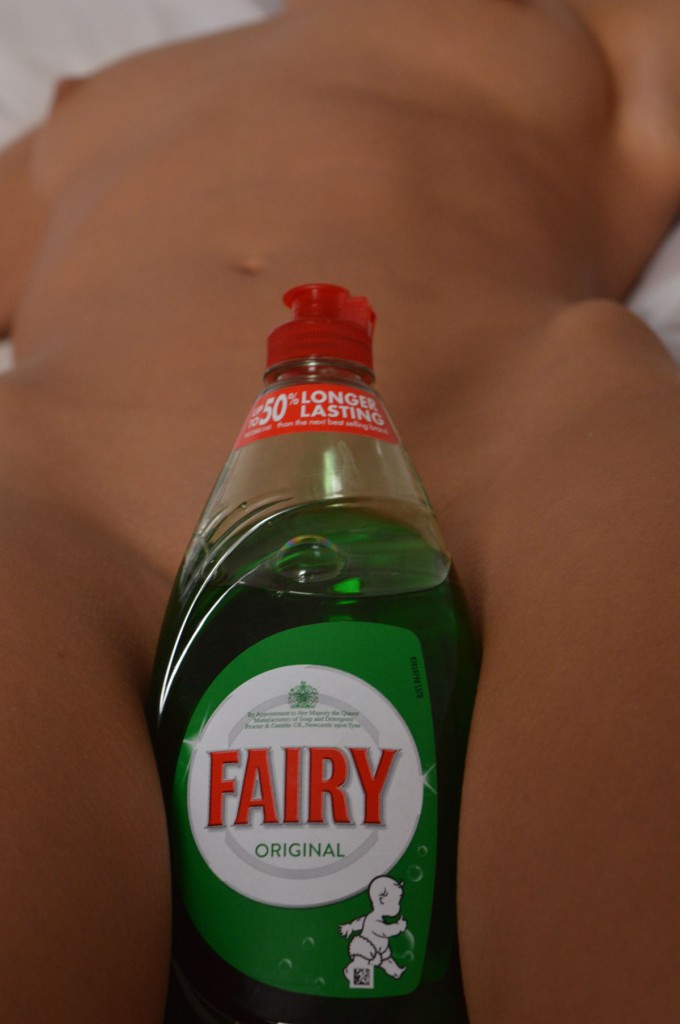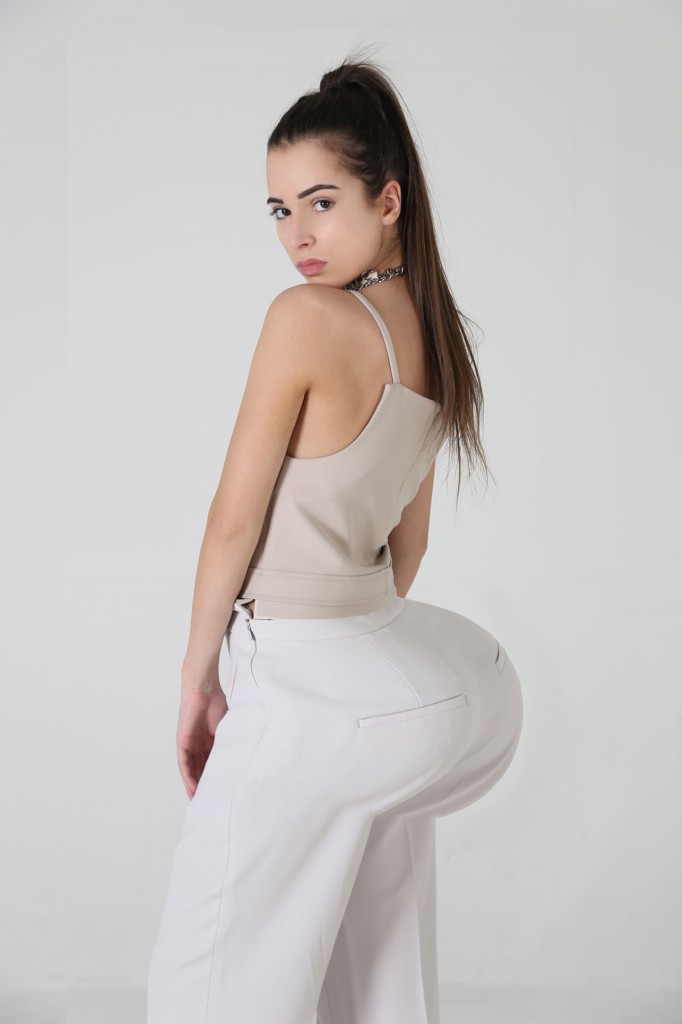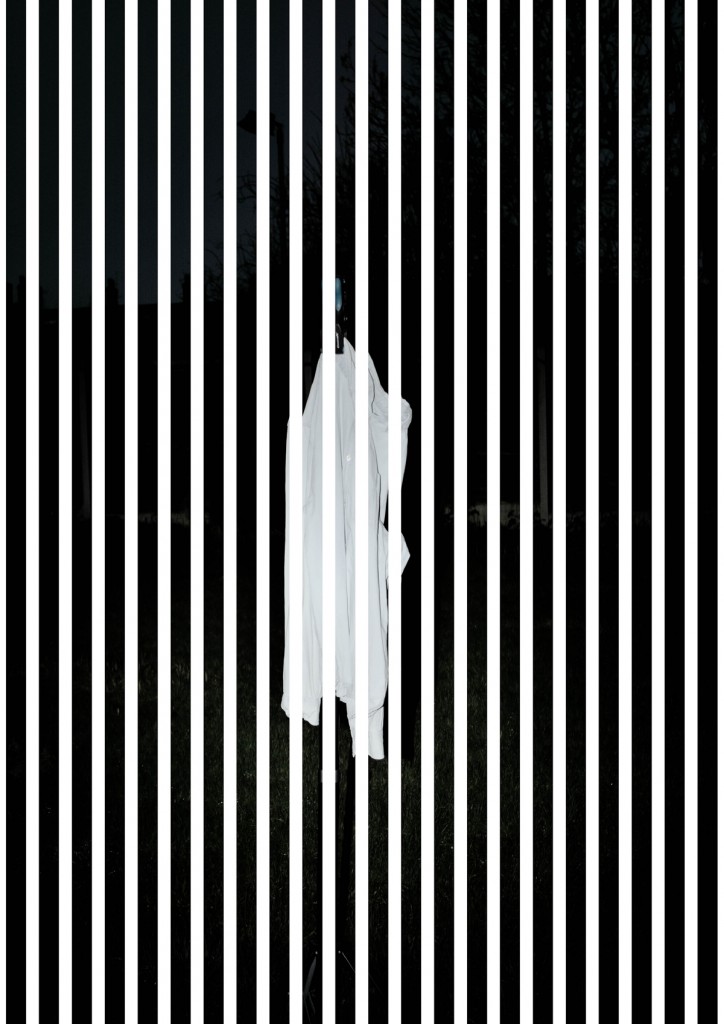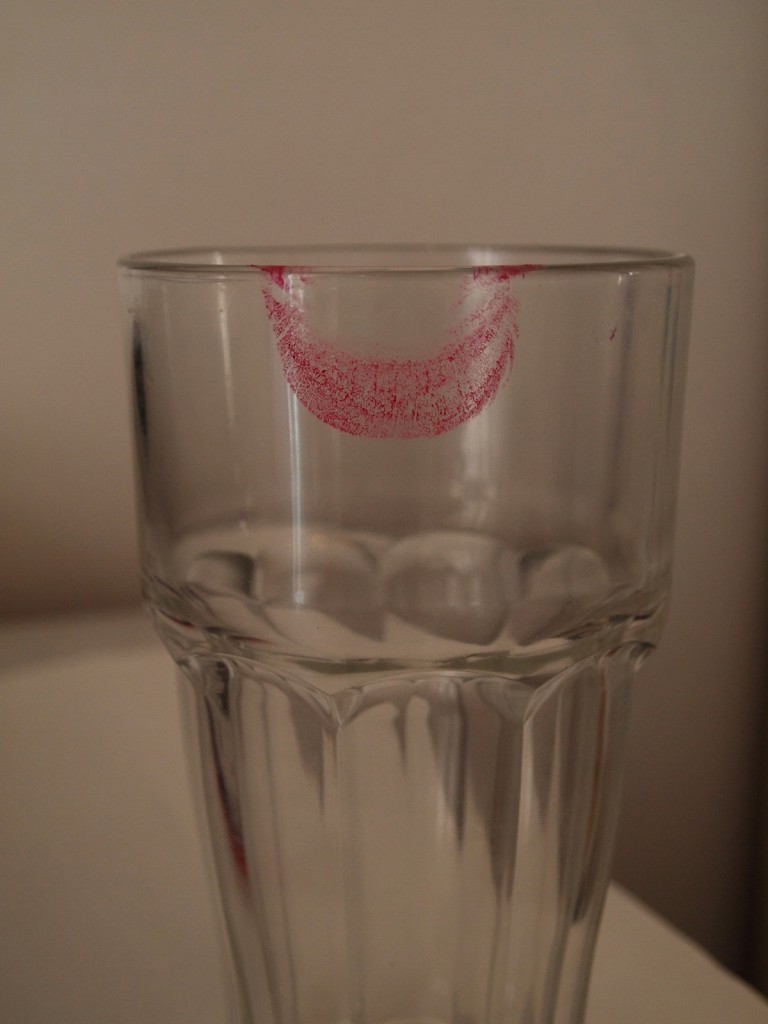We teamed up with Dan Szor – lecturer, Fashion Image Making Styling and former art director and deputy editor of cult Nu Rave magazine Super Super – and his students from the University of Salford, Manchester. We invited them to examine our briefed concept of Antibody/Antiform. We are more than excited to share the works of these raw talents with you.
LECTURER: DAN SZOR, FASHION IMAGE MAKING STYLING AT SALFORD UNIVERSITY
CREATIVE BRIEF: UWE BERMEITINGER, MAXI SCHMID (ASSISTANT)
EDITOR: LORENZ HARTWIG
Two blank spaces, nestled between other prints, stand out on the de rigueur white walls of an the academic citidel. The prints, now replaced by empty space, were part of an exhibition in the atrium of The School of Arts and Media at the University of Salford, in Manchester, UK. The exhibition featured the works of students that were produced on basis of a TISSUE Magazine briefing focussing on the analysis of our concept of ANTIBODY/ANTIFORM. The images had to be removed from the walls due to complaints around the subject of nudity. „We left the space where the offending images hang blank as traces to an exhibition that no longer existed in its original form – leaving viewers questioning what had been there“, says Dan Szor, lecturer for Fashion Image Making Styling (Fims). This case of censorship left the us pondering many questions – from the role of an art school as a safe space for artistic expression in a world thats seems so easily offended, the subjectivity of offence, self censorship and the production of safe art, through to discourse around public/private space and the role of the atrium as a gallery.
Dan Szor, former Art Director and Deputy Editor of Nu Rave Magazine SuperSuper, contacted us in his function as a lecturer at the univiversity, inviting TISSUE to come up with a briefing for his students. „We usually give them a theme, word, quote and then let them run with it – it’s pretty free – with a lot of onus on being free and as creative as possible!“, wrote Dan. The idea that immediately crossed our minds was to make the students part of the process TISSUE has been undergoing for more than a year. We are exploring new forms of publishing that replace the traditional print magazine. We decided to turn TISSUE into a liquid magazine and thereby making it accessible to more people and giving them the opportunity to profit from the creative network TISSUE has established. The upshot of this transformation is more freedom in terms of creative expression giving us the opportunity to experiment with audio/visual or event/exhibition formats.

Antibody/Antiform
TISSUE Magazine is no longer a print publication. We are in a proccess of transforming the magazine into a platform connecting artists in a creative collective. Together we are researching new forms of publishing. Focussing on digital, audio-visual as well as event/exhibition formats. That‘s why we tend to call TISSUE a liquid magazine.
We would like you to join us on this journey.
So, here is what we would like you to contibute:
We got fascinated by an aesthetic theory called ANTIBODY/ANTIFORM. As we understand it it’s a rejection of the male gaze, visual codes and aesthetic conventions.
We would like you to analyse this concept practically. In your very own way. Try to think of modes or forms of representing a body rather than presenting it. Try to depict traces of it’s presence rather than showing the naked flesh. Feel free to experiment with deceptions, vagueness and opacity. The choice of your medium is free.
Team TISSUE is really looking forward to see your works.
Yours truely,
Team TISSUE
January 4th 2017, Hamburg, Germany
What made us go down that road is not just the insight that the magazine industry is flawed but also the feeling of a necessity to change our approach to aesthetics. The constant reproduction of visual conventions, the objectification of the body and the male gaze gave us the feeling that it’s time for a change in how we work. Therefore we started to analyze the concept of ANTIBODY/ANTIFORM trying to transcend the visual codes that dominate modern culture. So we invited the students to help us analyze this concept practically encouraging them to question visual codes and conventions. And that is exactly what the course Dan teaches on is all about. The course encourages students to find their own style of photography, art direction and individual aesthetic. Whilst being aware of trends and memes they look beyond them to establish their own. Topics like gender, art theory, politics, race, identity, climate change are used as a source of inspiration.
What qualifies Dan Szor to teach a course like this becomes obvious when looking at his background. He studied the course he its now teaching. Whilst still studying he became the art director for Super Super, a magazine born out of the DIY London club/fashion scene. „2007 was really inspiring time to be in London and Super Super really captured the zeitgeist and energy of the time“, says Dan. Deciding to undertake an MA in Art and Politics at Goldsmiths, he moved to Peckham, South London, which was just on the cusp of emerging as the semi-bohemian, young, artistic scene that came to define it. When gentrification finally turned up and the rents subsequently rose, Dan decided to make a radical move some 250 miles away. „I decided to go and live in semi-isolation at the foot of Mount Snowdon in Wales. Rent was insanely cheap for the space we had. I spent a lot of time thinking, walking up mountains, making two albums of experimental music and various artworks/video pieces.“
Dan encouraged his students to work and think independently on their approach to solving our task. „I had to complete the task in my head in order to teach it. When we broke down the Antibody/Antiform brief we realized that there were a number of angles/ways we could approach it.“ Dan and his students discussed the brief and worked together in subsequent tutorials. „After the initial launch, the project was broken down into tutorials, where myself and the students could discuss their respective concepts.“ To do so they looked at a wide breadth of material from subverting the male gaze through the work of Collier Schorr, challenging aesthetic convention by exploring surrealism through Duchamp and Ithell Colquhoun, and exploring the idea of traces by looking at Alvin Baltrop, Gordon Matta Clark, Harley Weir and Wolfgang Tillmans.
The final results of the student’s analysis of the concept of Antibody/Antiform are featured below. Each work is accompanied by an artist statement providing an insight into the artist’s individual approach. And of course we do feature all of the works – no blank spaces at TISSUE.
TISSUE x FIMS
Tremaine Senior
All of my work acts as me reflecting the things I see around me. As a sexually active bi-sexual man using apps like Grindr & Tinder to hook up with men my art work often reflects these seedy text messages, teeth clinking together and picking up your dirty t-shirt at 6am trying to leave as quietly as you can. While laid in bed, pondering what antibody & antifoam means to me, a message on Grindr from another headless torso; a dick pic. His profile reads ’11”, thick uncut’… Your dick really isn’t that big. My project #boyslie came from the idea that so many men lie about their size when online. I worked to poke fun at this, taking the explicit images I myself had received and cropping them, stretching them, and placing them over idyllic images like blue skies and bouquets of flowers. No one cares about the size of your dick, but I’d just rather you didn’t lie about it.
Megan Giblin
For my response to Antibody/Antiform, I wanted to look in more detail at the body and different objects. Showcasing the details, we can’t see from first glance. Showing how something can look different and make you question the form of it and how you perceive it. To do this I used a microscopic camera and a scanner to take abstract photos. I then added different colour layers to change it again. In this particular image from a distance it looks like cells but up-close you can see more details of the chest area but it still questions the obscurity of it and the gender.
Ellen Roberts
The statue is something built and designed with the sole purpose of being looked at – to represent the human form and to solidify someone’s character into eternity. I wanted to reject the idea of this ‘form’, to hide what we would normally see only leaving the trace of someone or something behind. How they can become something different, something new when fully concealed, yet we are able to still recognise them for what they are. There is still a presence of someone left behind only it cannot be accessed by our own gaze.
Georgina D’silva
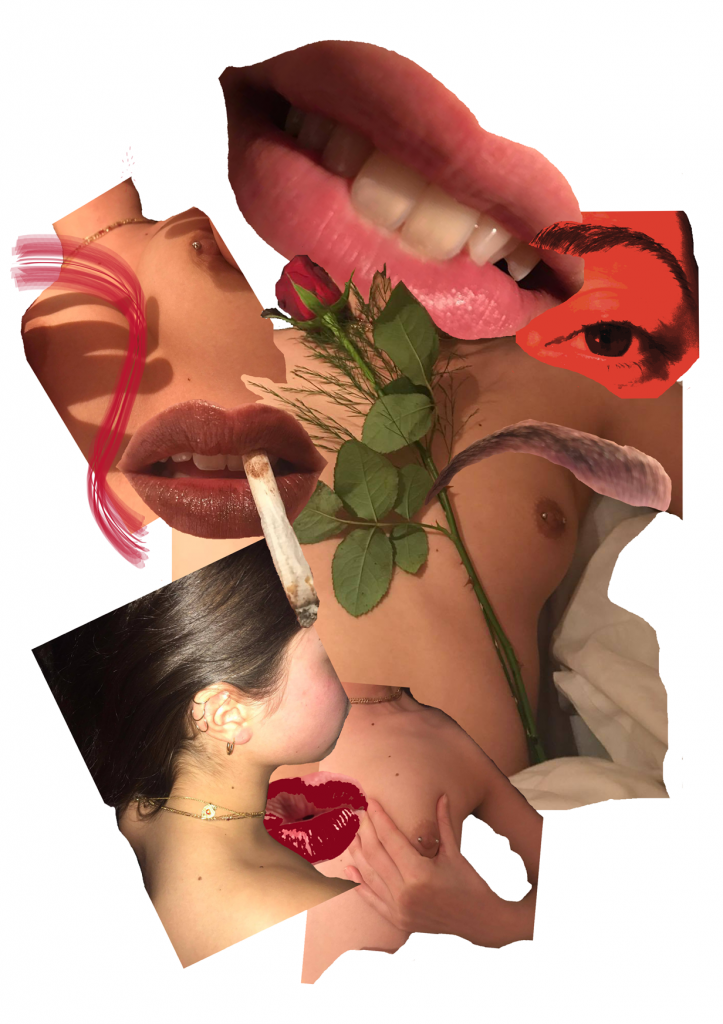
“For this project, I had this romance idea in my head, I’ve never done something so cliché before. I took inspiration from 90’s comedy/drama film American beauty. I did this by using strong exotic and vibrant colors to match my visuals. I had the idea in my head that I wanted to tell a really cliché romantic story with my piece from a male’s P.O.V, showing traces of the female body that he craves for the lust of. Therefore, I photographed sensitive parts of the body such as: behind the ear, the nipple, lip biting/movements- co-operating them with bed sheets, roses and other features. I wanted my collage to be quite ‘in your face’ sensual and tacky.”
Ella Jay Kempton Blake
I wanted to create something that everyone connects with, yet in some aspects, they don’t notice. Every day we leave our own traces behind without realizing. Everything we do involves a trace. I wanted to make my own documentary, by creating a series of images explaining my day to day routine. I did this because I wanted people to realise that we leave a trace behind in every individual thing that we do. A trace defines who we are as a person, and that is something which I wanted to share with others.
Sophie Crompton
The image of that girl in the last Instagram picture I uploaded is not me, but the Sophie Crompton that the rest of the world sees. We portray ourselves on social media how we want everyone else to view us; but in reality that’s not 100% us. We post things to prove a point for our ex’s or ex-best friend that stabbed you in the back to see. You are happy and living your life without them. It is a fake trace of our everyday lives. Why do we hide behind this mask that is social media? We are our social medias shadow; and The Social Mask explores this idea.
Racheal Morrissey
The undressing of clothing revealing what lies under, miss placed objects which tells a story of the happening of a late night. When waking up to stepping on the floor of a squeezed tube. squirting on the two objects the meaning and the identity of romance of both body parts.
Phoebe McKeown
I looked at the project from a very broad perspective and decided to consider any form of Antibody/Antifoam, indicating that someone had been here before and the traces that they had left behind.
What surprised me was the sheer amount of waste we as human being’s create and then simply discard in such a damaging and disrespectful way.
Britain is a cosmopolitan country; what message do we send out to our visitors?
Their unconscious view will be that everyone who lives here leaves traces like this, everywhere they go.
Isobelle Landles
In my images I explored the meaning of the male gaze, how the male species objectify and sexualize women. However, through my images I wanted to show that this is not always the case, women can sexualize themselves by what they wear, by watching porn for themselves: This therefore could be seen to be a rejection of the male gaze.
Jenny Hayes Barlow
Inspiration for my work came from almost flipping the Male Gaze into the Female Gaze. I liked the idea of swapping our ‘stereotypical’ gender roles and mindsets, in which I decided to showcase a male playing more of a submissive role for what would be a female’s pleasure
Josephine Hunt
Living in a time where life is being slowly taken over by the digital age. I wanted to show the beauty which can be found the traces we create – in the ‘real’ world. We leave traces online, but they don’t compare to raw, physical traces of the everyday. I wanted to document these traces in an almost romantic way. Showing the beauty within the overlooked aesthetics which we leave behind.
Eloise Boden
After reading the supporting text for the brief of Anti body/form I found that the theme of cyberspace being a trace of ourselves a theme that really spoke to me because I feel that because I have social networks, a piece of me is now online and always will be. Also, I know that usually, people only post the positive things that happen in their lives on social media so it’s not showing a true depiction of their lives, and therefore we only see a shadow of them. This is when I started to research ways in which I could creatively capture parts of the body, and I chose to do this through scanography. I loved doing it because it was fun to figure out different methods in which to manipulate the images and in turn, the body parts. I will definitely be experimenting with scanography in the future.
Lucy Bonner
Exploring the social media centric attitude of a typical “girl’s night out” using snippets of moving image shows the unique rituals involved in getting ready to go somewhere and how seriously everyone takes it. I love the confidence of British girls on a night out which differs massively from many other nightlife cultures across Europe. By piecing together traces of weekend routines including drinking, dancing and journeys to the club, the short film signifies the liberation of a woman having fun independently in what would normally be a crowded environment. Referencing Lilya-4 -ever by Lukas Moodyson, Rineke Dijsktra – Buzzclub and Mark Leckey club footage – Fiorruci Made Me Hardcore, a motivation behind a lot of my work is the re-contextualization of nightlife rituals.
Chloe Burn
The empowerment of nudes. Nudity and equalization of the human form is stronger and greater than us merely adhering to the male gaze. Taking nudes can be a statement of strength. A show of belief in ourselves and a pride in our body.
Nudes when taken in the right context, for the right reasons, are nothing more than a documenting of our most intimate selves. Not seedy, nor trashy, nor meant to conform to societies construction of the male gaze. Nudes can hold the upmost empowerment, whether taken simply to preserve a positive and powerful view of ourselves or for the purposes of choosing to share them with a loved one. Choosing nudity is our decision.
Ellie Caffrey
Liberta = Freedom. With the use of collage, I have rejected the male gaze of a naked female in the flesh by suppressing the parts of the body that would usually identify the sex. I want to allow people to be free with their identity and be exactly who they want to be. A genderless world is a better world.
Konstantino Zarveri
Through the work I have submitted I am exploring the concept of tracing life. I’ve been thinking about the elements and their links to the physical notion of life itself! These smaller constructs that we are made up of go unnoticed in a world fixated on hyper reality (the bigger the better?) and thus I wanted to celebrate/appreciate the smaller things – the bubbles in a can of coke as opposed to the can itself. The hair on the legs as opposed to the muscles and the definition
Emma Benge
Humans are animals made up of breadcrumbs. We leave traces behind every step we take. There is always a way of telling where an individual has been, has walked, or even sat – despite the individual no longer being there. These traces are left for others to see. Footprints are a very special trace; they are the most mysterious. They leave behind small traces of the individual – what size foot they have, what shoe they were wearing, the direction they were walking in. Yet, we are told nothing about who they were. The footprint creates a figure, a presence of someone who is no longer there, a small detail, a small trace, a blurred vision in our imagination.
Clark Warburton
An objectification of antibody, using the female form as a celebration of herself not an objectification and a defying rules, smoking is historically not an attractive thing for a woman to do, it’s a man’s habit, but it’s a trace, it’s a representation of time burned down, of an aftermath, all a massive “Fuck You” to the gaze of anyone else but one’s self and a question raised on how we are living in contemporary society.
Victoria Jones
In modern society Every girl wants that perfect image. Are perspectives are altered by social media and heavily edited images. Something that has become a trend in this digital age. People can transform their bodies to whatever they want it to look like. All shape and sizes. But not everyone one see’s these images as perfection. The world of social media allows people to hide behind filters. Not allowing their own original self to be shown. No two people are the same.
Mateusz Tadych
My response to the brief was to look at how a garment looks without a person wearing it! I photographed clothing hanging outside. Someone has worn that garment, but where too…and where are they now? Traces of a presence pose many questions to an inquisitive mind! I added the white lines to greater the sense of unease. What’s behind and why?
Chloe Winslet
My work is capturing the traces of the body rather than the physical. I have captured the lipstick marks left on objects, something that is seen everyday but never really noticed. Sometimes the most banal can be the most meaningful…if we happen to notice!
Visitez:
www.salford.ac.uk
www.danszor.com

